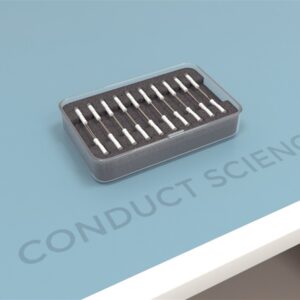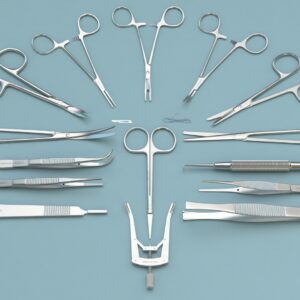$2,290.00 – $7,490.00Price range: $2,290.00 through $7,490.00
Optogenetics laser is a widely used technique in bioengineering and neuroscience for delivering focused laser radiations to the targeted areas.
Optogenetics laser serves as a compact, portable laser source in laser-equipped laboratories. It has an impeccable design, life expectancy of more than 10,000 hours, durability, and reliable performance making it a good choice for the experimenter. Optogenetics laser is available in three colors/wavelengths: blue light of 473nm wavelength, green light of 532nm wavelength, and red light of 593nm wavelength.
ConductScience offers the rodent optogenetics laser stimulation device.
AfaSci, Inc. is a biopharmaceutical company focused on discovering and developing innovative therapies for pain management and neurological disorders. Based in the San Francisco Bay Area, AfaSci specializes in non-opioid, non-NSAID solutions to address chronic pain, neuropathic conditions, and central nervous system diseases. Their research is centered around peptide and small molecule drugs, with several promising preclinical candidates targeting specific ion channels and enzymes involved in pain and inflammation. With a strong intellectual property portfolio and strategic partnerships with academic institutions, AfaSci is dedicated to advancing novel treatments that aim to improve patients' quality of life while reducing reliance on traditional painkillers.



Optogenetics laser is a widely used technique in bioengineering and neuroscience for delivering focused laser radiations to the targeted areas. Lasers are coherent, monochromatic light sources having narrow wavelengths. The output generated by a laser source is always “in phase.” Due to these characteristics, lasers can be used in conjunction with optical fibers. This property of lasers enables them to be used for optogenetic research purposes. This approach is used in neuroscience to study and manipulate deeper brain structures.
Different wavelengths of the visible light spectrum are used in Optogenetics labs. Depending upon the opsins being expressed, an optogenetics lab might require illumination sources in blue (450-480nm), green (520-560nm), yellow (570-600nm), or red (600-780nm). These wavelengths can be used alone or in combination with each other to halt or trigger cellular responses. In this case, we use compound wavelength lasers that provide the same beam while rapidly swapping between wavelengths.
The selection of a laser is critical, and one must do it based on the parameters listed below:
Types of Lasers used in Optogenetics
There are two types of optogenetics laser:
Optogenetics laser serves as a compact, portable laser source in laser-equipped laboratories. It has an impeccable design, life expectancy of more than 10,000 hours, durability, and reliable performance making it a good choice for the experimenter. Optogenetics laser is available in three colors/wavelengths: blue light of 473nm wavelength, green light of 532nm wavelength, and red light of 593nm wavelength. It can connect to various FC/PC connectors that enable them to work efficiently in high vibration environments. The optogenetics laser can be connected to a waveform generator to control light output during an experiment. The output power is adjustable and varies between 0 to 200mW. It is used in conjunction with a power meter to check the output of laser power. A high-power laser is harmful to humans; therefore, PPE such as laser safety goggles must be used when working with it.
Manipulation of neural circuits
Mahmoudi et al. (2017) suggested that “Optogenetics is a neuromodulation approach that manipulates the neural functioning using light.” Optogenetics laser has significant applications in neurobiology. The laser is used to manipulate neurons to study neural mechanisms and neurodegenerative diseases. The laser light uses opsins for neural stimulation. The irradiated opsins generate a potential difference by flowing across the membrane, and the resulting altered membrane potential mimics the ‘normal action potential,’ thereby stimulating the neurons. This neural stimulation is used to study the mechanism of neural diseases like Parkinson’s disease, schizophrenia, epilepsy, and stroke (Arrigoni, 2016).
The lasers present several advantages over other neural stimulation methods, such as deep brain stimulation (DBS), which can stimulate cells other than target cells, and electrical signaling, which in some cases fails to identify specific cells. Optogenetics laser overcomes all these problems. It provides focused and high-intensity light in a single spot. Moreover, its narrow spectral width enables the researchers to get high intensity at the desired wavelength.
However, there are a few disadvantages as well. For instance, high-power pulsed lasers provide excessive output that can damage the tissue. Achieving sufficient light exposure without overexposing or damaging the brain cells/tissues is the real challenge for neurobiologists (Mahmoudi et al., 2017). We can resolve this problem by using lasers with adjustable power.
| Color | 473nm Blu-ray Laser, 532nm Green Laser-50mW, 593nm Yellow Laser-50mW |
|---|
You must be logged in to post a review.
There are no questions yet. Be the first to ask a question about this product.
Reviews
There are no reviews yet.